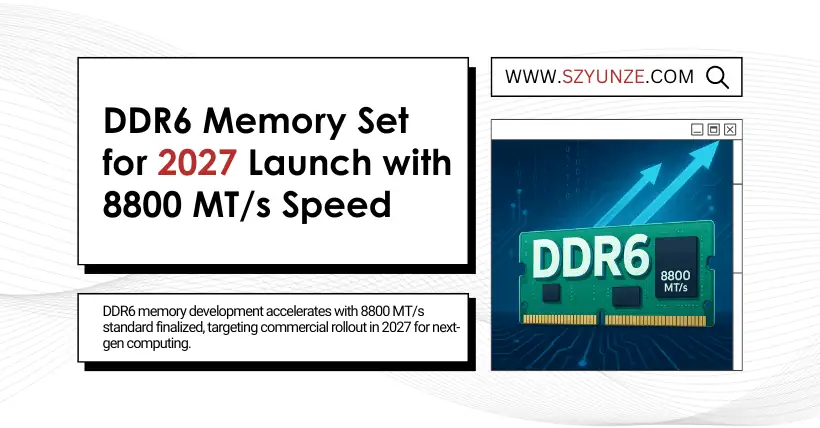At this stage, with memory giants like Samsung, SK Hynix, and Micron successively announcing the end of DDR4 memory chip production, DDR5 has officially taken over as the mainstream memory standard.
Under these circumstances, based on the normal pace of industrial upgrades and iterations, the next-generation DDR6 memory standard should already be more or less mature and ready. So, what’s the actual situation? This article focuses on sharing the latest industry leaks about DDR6 memory.
— Don’t assume DDR6 memory is still just a concept or PowerPoint idea. As early as 2024, the JEDEC organization officially finalized the technical specifications for DDR6 memory.
Specifically, DDR6 memory has a base transfer rate of 8800MT/s, which is about 83% higher than DDR5’s 4800MT/s. Under extreme conditions, DDR6 memory’s maximum transfer rate can soar to 17600MT/s. Additionally, DDR6 will adopt a new architectural design, moving to a 4×24-bit channel layout, compared to DDR5’s 2×32-bit channels.
DDR5’s 2×32-bit channel structure becomes increasingly susceptible to signal interference issues as bandwidth increases. In contrast, DDR6’s 4×24-bit design boosts total bandwidth by increasing the number of channels and optimizing the bit-width distribution. This reduces the data pressure on each individual channel and greatly improves stability at high frequencies.
DDR6 will also introduce more advanced ECC (error correction) mechanisms and power management technologies, enhancing performance while controlling power consumption growth. These improvements will enable DDR6 to better meet the computational demands of next-generation CPUs and GPUs.
Reportedly, major DRAM manufacturers around the world have already accelerated DDR6 R&D. Chip giants like AMD, Intel, and NVIDIA are also working closely with memory manufacturers to promote collaborative optimization between processors and memory.
DDR6 memory is expected to complete testing and verification by 2026 and enter commercial use in 2027. However, its rollout will follow a gradual penetration pattern:
Initially, DDR6 memory will be applied to enterprise-level markets, particularly in areas highly sensitive to memory performance, such as HPC (high-performance computing) and AI servers. Widespread adoption in the consumer market will take longer. Industry predictions suggest that average PC users won’t have broad access to DDR6 memory until around 2030.
Given this, DDR5 memory is expected to continue dominating the consumer market for the next 5 to 8 years. Whether it’s gaming PCs, ultrabooks, or home consoles, DDR5 will remain the standard configuration and stay in service for a long time. We’ll share more related updates and leaks as soon as they become available—stay tuned.

Disclaimer:
- This channel does not make any representations or warranties regarding the availability, accuracy, timeliness, effectiveness, or completeness of any information posted. It hereby disclaims any liability or consequences arising from the use of the information.
- This channel is non-commercial and non-profit. The re-posted content does not signify endorsement of its views or responsibility for its authenticity. It does not intend to constitute any other guidance. This channel is not liable for any inaccuracies or errors in the re-posted or published information, directly or indirectly.
- Some data, materials, text, images, etc., used in this channel are sourced from the internet, and all reposts are duly credited to their sources. If you discover any work that infringes on your intellectual property rights or personal legal interests, please contact us, and we will promptly modify or remove it.



